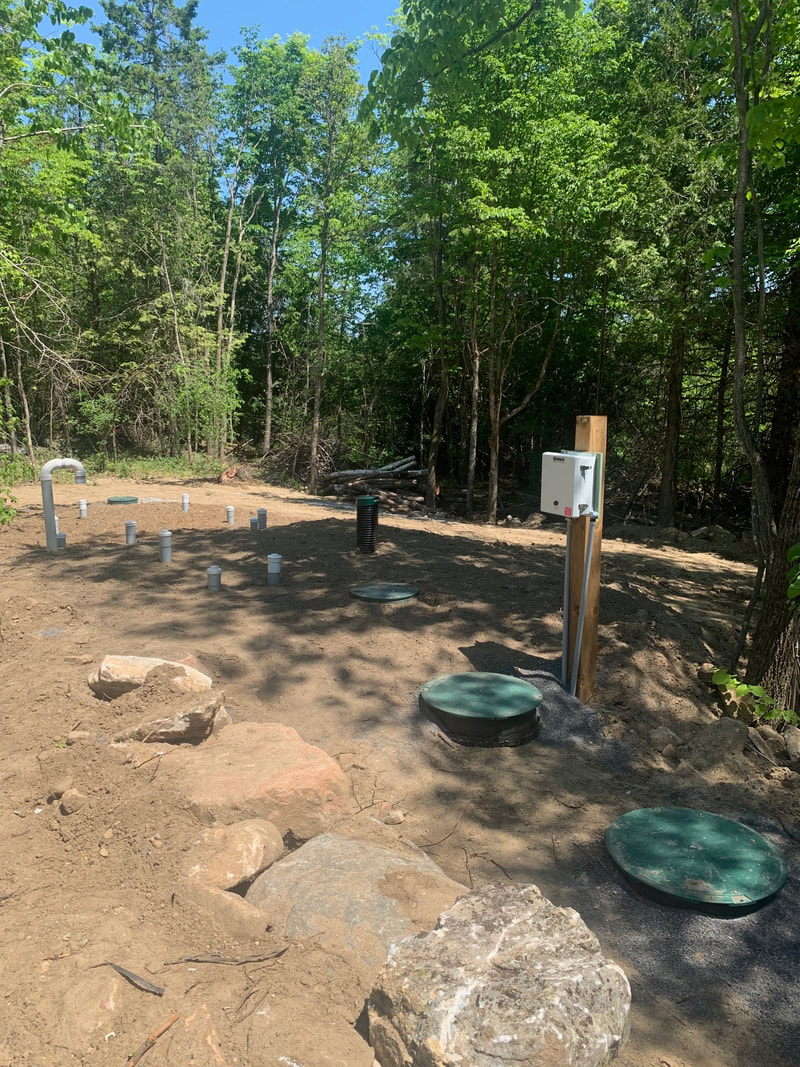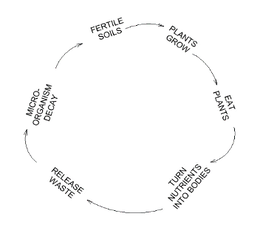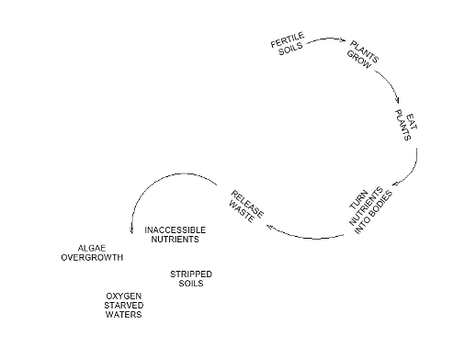|
Editor's note: Garrett Johnson of Plenty Canada designed and installed three systems that follow the conservation pattern demonstrated by nature. Nature operates on what is called a closed loop system, where nothing is wasted, only returned to the cycle itself to sustain and strengthen the system. The three systems return what is often considered waste: rainwater and human sewage. We asked Garrett to enlighten us with some knowledge about these fascinating systems that are now part of Plenty Canada’s land-based learning centre. Constructed WetlandPart of our responsibilities when existing with other non-human species is to respect our impact when releasing waste into the environment. Rural properties are generally not connected to centralized infrastructure like sewers in the city. Instead, they depend on septic systems or outhouses to dispose of their waste. Both approaches end up releasing our sanitary waste onto or into the ground, and often the contaminants and nutrients from our bodies end up in groundwater supplies or surface water supplies. In many instances, it is desirable to have an extra level of treatment for these sewage systems beyond a standard absorption trench system. In Ontario, these systems are all proprietary method that require ongoing maintenance agreements with delegates of suppliers. There is currently no non-proprietary method for an extra level of treatment. Plenty Canada designed and constructed a system called a “constructed wetland” or “engineered wetland,” which is essentially a sand filter in a basin in which the underground root zone of plants stays permanently saturated, to allow wetland plants to thrive and help out with the treatment of water. The system at Plenty Canada was not the first in the region — the Rideau Valley Conservation Authority office uses a similar system for their sewage treatment. Rainwater Harvesting System Thousands of litres of clean water fall from the sky onto your house every year. The rainwater harvesting system at Plenty Canada’s Makwa Inn safely collects and stores this water for use inside the house before using it and releasing the water back to the earth. This system is intended to be used as an example to showcase an alternative approach to supplying our homes and bodies with clean water. Given that many remote rural communities no longer have clean sources of drinking water due to industrial and agricultural pollution in ground and surface waters, this could act as a viable alternative method of gathering water. North Americans often view rainwater as a hazardous source, however, in other countries the perception is often quite different. In Australia, for example, millions of modern homes use rainwater either as a supply to offset potable use, or as the sole source of water with city infrastructure as a backup. With a few simple guidelines, it is easy to collect and store a safe supply of rainwater that should not pose a risk to health — and, with a bit more filtration, can be a great source of potable water. These small-scale systems can have huge benefits to municipal infrastructure and can also act as a path toward self-sufficiency in areas that are not connected to a municipal supply. Composting Outhouses
 Our first composting outhouse will be completed with a living roof, a wheel chair accessible ramp and full accessible bathroom inside. Our first composting outhouse will be completed with a living roof, a wheel chair accessible ramp and full accessible bathroom inside. Plenty Canada has built a composting outhouse as a small-scale solution to this issue. The waste from visitors to the facility will be collected, stored, safely converted to stable compost (as in, a form that does not readily leach nutrients into groundwater) and put back onto the land. While Plenty Canada has not yet progressed to grow food with outhouse compost, we will showcase the methods which people (or groups of people) can safely close the nutrient cycle. — Garrett Johnson, sustainable building (water management system)
0 Comments
Your comment will be posted after it is approved.
Leave a Reply. |
|
-
Home
- Donate
-
Projects
-
Canada
>
- Plenty Canada CampUs
- The Healing Places
- Two-Eyed Seeing Bird Knowledge
- Niagara Escarpment Biosphere Network
- Greenbelt Indigenous Botanical Survey
- Great Niagara Escarpment Indigenous Cultural Map
- Ginawaydaganuc Indigenous Food Sovereignty
- Indigenous Languages and Cultures Programs >
- Wild Rice
- Good Mind Grappling
- Ginawaydaganuc Village
- Youth Programming >
- Caribbean >
- Central & South America >
- Africa >
-
Canada
>
- News
- Resources
- Partners
- Contact Us
Our LocationPlenty Canada 266 Plenty Lane Lanark, Ontario, Canada K1G 3P4 (613) 278-2215 |
Donate to
|
Subscribe to our Newsletter |





